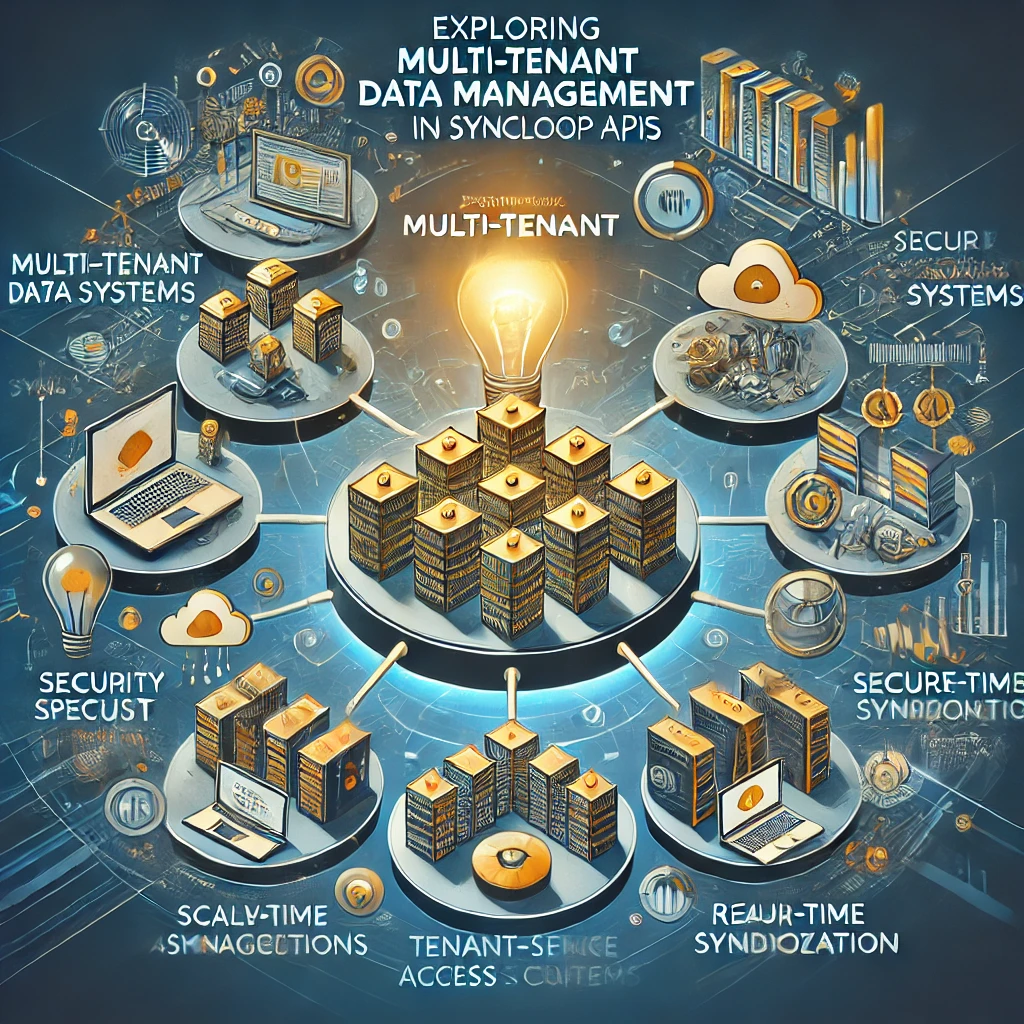Exploring Multi-Tenant Data Management in Syncloop APIs

Syncloop offers robust tools and features that simplify multi-tenant data management, empowering developers to handle complex requirements such as data isolation, dynamic configurations, and scalability. This blog explores how Syncloop facilitates multi-tenant data management and provides best practices for optimizing its implementation.
Challenges in Multi-Tenant Data Management
- Data Isolation: Ensuring that tenant data remains securely separated from other tenants.
- Scalability: Handling increasing numbers of tenants without compromising performance.
- Customizability: Supporting tenant-specific configurations and workflows.
- Compliance: Meeting regulatory requirements for data privacy and security.
- Performance: Maintaining fast and reliable access to tenant data during high traffic.
How Syncloop Simplifies Multi-Tenant Data Management
1. Tenant-Specific Data Isolation
- Use Syncloop’s role-based access control (RBAC) and data partitioning features to isolate tenant data effectively.
2. Dynamic Configuration Management
- Tailor APIs dynamically for each tenant by enabling tenant-specific configurations and workflows.
3. Scalable Architecture
- Leverage Syncloop’s auto-scaling capabilities to manage growing tenant numbers and traffic seamlessly.
4. Centralized Management
- Manage all tenant configurations, access controls, and data policies through a unified Syncloop interface.
5. Real-Time Monitoring
- Track tenant-specific metrics such as API usage, performance, and data flows in real time.
6. Secure Data Handling
- Protect sensitive tenant data with encryption, authentication, and secure communication protocols.
7. Versioning Support
- Manage API versions to ensure backward compatibility while introducing new features.
Benefits of Using Syncloop for Multi-Tenant Data Management
1. Simplified Operations
Manage tenant-specific data policies and configurations through a centralized platform.
2. Enhanced Security
Protect tenant data with advanced access controls, encryption, and compliance features.
3. Improved Scalability
Support increasing tenant numbers and data demands without performance degradation.
4. Real-Time Insights
Gain actionable insights into tenant activity and performance with monitoring tools.
5. Faster Development
Accelerate deployment with prebuilt templates, automated workflows, and dynamic configurations.
Real-World Applications of Syncloop for Multi-Tenant APIs
1. SaaS Platforms
- Deliver tenant-specific dashboards, billing APIs, and analytics for diverse client needs.
2. E-Commerce
- Provide unique product catalogs, order management, and user profiles for different vendors.
3. Healthcare Applications
- Enable secure patient data handling for clinics, hospitals, or research organizations.
4. IoT Systems
- Manage tenant-specific device groups, data streams, and automation workflows.
5. Financial Services
- Support tenant-specific compliance, reporting, and transaction APIs for banks or fintech platforms.
Steps to Implement Multi-Tenant Data Management with Syncloop
Step 1: Define Tenant Requirements
- Identify the data isolation, security, and customization needs of your tenants.
Step 2: Configure Data Policies
- Use Syncloop’s tools to set up access controls, data partitioning, and tenant-specific configurations.
Step 3: Automate Workflows
- Design workflows tailored to tenant operations with Syncloop’s visual builder.
Step 4: Monitor Tenant Activity
- Use real-time dashboards to track tenant-specific usage patterns and performance.
Step 5: Scale Dynamically
- Enable auto-scaling to support tenant growth and traffic spikes efficiently.
Step 6: Ensure Compliance
- Implement encryption, access logging, and policy enforcement to meet regulatory standards.
Best Practices for Multi-Tenant Data Management
- Isolate Data Rigorously: Use access controls and data partitioning to prevent cross-tenant data breaches.
- Plan for Scalability: Design APIs to handle increasing tenant numbers and workloads seamlessly.
- Monitor Continuously: Track tenant-specific metrics to identify and resolve performance issues proactively.
- Customize Flexibly: Enable dynamic configurations to meet the unique needs of each tenant.
- Document Policies: Maintain clear documentation for data policies and workflows to simplify management.
Conclusion
Effective multi-tenant data management is essential for delivering secure, scalable, and customizable APIs in SaaS and enterprise applications. Syncloop provides the tools to simplify this process, from data isolation and dynamic configurations to real-time monitoring and scalability.
Whether managing SaaS platforms, IoT networks, or e-commerce operations, Syncloop empowers developers to handle multi-tenant environments efficiently. Embrace Syncloop to optimize your data management strategy and deliver exceptional tenant experiences.
A conceptual visualization of multi-tenant data management powered by Syncloop, showcasing tenant-specific dashboards, dynamic configurations, and secure data handling.
Back to Blogs